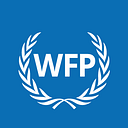Impact of School Feeding Programmes in low and lower-middle income countries: what have we learnt?
By Adetoun Dapo-Famodu, Simone Lombardini and Dahyeon Jeong
What lessons can we learn from school feeding programmes across the globe? A recent literature review by WFP’s impact evaluation team highlights the importance of context, complementary interventions and school feeding’s spill over effects.
The World Food Programme’s (WFP) Office of Evaluation (OEV), in partnership with WFP’s School-Based Programmes (SBP) division and the Development Impact Evaluation (DIME) unit at the World Bank, recently launched a School-Based Programmes Impact Evaluation Window.
To prepare for this window, we conducted a review of recent evidence on the impact of school feeding interventions in low and lower-middle income countries.
The review identified three systematic reviews and 17 experimental or quasi-experimental studies published between 2009 and 2019. Findings from this review are presented in the publication School Feeding Programmes in low and lower-middle income countries: A focused review of recent evidence.
Below we present a quick summary of what we learnt and outline the evidence WFP needs to incorporate when designing future interventions.
Contexts and interventions matter
The underlying conditions within the target population and the nutritional value of school meals influence the impact of school feeding interventions.
Where school enrolment was poor, for example in Burkina Faso, Mali, and the northern region of Lao People’s Democratic Republic, school feeding resulted in more children enrolling in school. However, in Ghana, where most of the primary school-age children were already enrolled in school, providing school meals only increased enrolment among girls, children from households living below the poverty line, and children from the northern region of the country.
A daily school meal means children can focus on their studies rather than their stomachs.
For needy children, school meals are often the only proper meal they eat. ©WFP/Derrick Botchway
Studies in Uganda, Cambodia, Vietnam, Ghana, Lao PDR, and India show that levels of vitamins and minerals in schoolchildren (micronutrient status) increases when children consume school meals. However, this rise in micronutrient status mostly accompanies consumption of micronutrient-fortified meals. The types of vitamins and minerals, and the child’s prior levels of specific vitamins or minerals, play a role in whether there is an improvement in micronutrient status.
Complementary interventions help
Depending on the outcome of interest, school feeding is more effective when provided within a package of complementary interventions.
For example, although micronutrient fortification of school meals improves the micronutrient status of schoolchildren, it may cause problems if provided without deworming. A study in Cambodia found that consumption of rice fortified with micronutrients can increase hookworm prevalence, especially in environments with high hookworm infection rates. Another study in Vietnam found that the likelihood of being infected with Ascaris (large roundworm) reduced more when schoolchildren were given both micronutrient-fortified biscuits and deworming tablets versus when they were given deworming tablets alone.
In another example, highlighting the importance of complementary interventions, the learning effects of school meals are more pronounced when complemented with other activities. Analysing over a million observations, a study on India’s midday meal programme revealed that school feeding increased the literacy and maths test scores of schoolchildren, especially among those who had been receiving school meals longer. More importantly, the scores further increased when complementary teaching inputs, such as teachers in attendance, learning materials, and functional blackboards, were available.
Benefits spill over
The effects of school-feeding go beyond the child — to households, and sometimes even communities.
For example, siblings (not eligible for school meals) of schoolchildren that were eating midday meals in Indian schools also recorded a test score increase. In Uganda, levels of moderate to severe anaemia reduced in adult women as well as children 6 to 59 months old who were living in communities where in-school cooked meals or take-home uncooked rations were provided to schoolchildren. In Burkina Faso, body weight relative to a child’s age, increased in the younger siblings (under five years of age) of schoolchildren receiving take-home rations.
What next?
There is growing evidence that school-feeding programmes can be effective in improving many child health and education outcomes. However, more evidence is needed to inform decisions regarding trade-offs in school-based programmes’ designs and implementations. For example, finding the optimal balance between cost, size, frequency, and meals’ composition; whether meals should be provided on-site, as a take-home ration, or via voucher/cash transfer; whether different school-based interventions (modalities or complementarity activities) contribute to greater girls’ well-being; and whether the benefits of locally procuring food is greater relative to direct import. There is also a growing need to better understand how different school-based programme designs can play an important role as a social safety net protecting boys and girls during shocks.
WFP’s Office of Evaluation (OEV), in partnership with the School-Based Programmes (SBP) division and Development Impact Evaluation (DIME) unit at the World Bank, will be attempting to answer some of these questions through the recently launched School-Based Programmes Impact Evaluation window.
School-based programmes use schools as a platform to implement activities, and include school feeding as part of a broader intervention to support children’s health and nutrition. Impact Evaluation Windows are portfolios of impact evaluations with the aim of building bodies of evidence in high-priority areas of WFP’s work. This is the third window launched, following the Cash-Based Transfer and Gender Window (launched in 2019) and the Climate and Resilience Window (launched in 2020).
Authors:
· Adetoun Dapo-Famodu: Previously Monitoring Consultant
(School-based Programmes — World Food Programme)
· Simone Lombardini: Impact Evaluation Specialist
(Office of Evaluation — World Food Programme)
· Dahyeon Jeong: Economist
(Development Impact Evaluation — World Bank)
